
Carpenter bees are species in the genus Xylocopa of the subfamily Xylocopinae. The genus includes some 500 bees in 31 subgenera. The common name "carpenter bee" derives from their nesting behavior; nearly all species burrow into hard plant material such as dead wood or bamboo. The main exceptions are species in the subgenus Proxylocopa, which dig nesting tunnels in suitable soil.
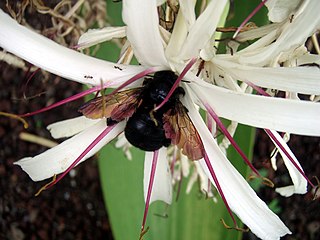
Xylocopa sonorina, the valley carpenter bee or Hawaiian carpenter bee, is a species of carpenter bee found from western Texas to northern California, and the eastern Pacific islands. Females are black while males are golden-brown with green eyes.

The California carpenter bee or Western carpenter bee, Xylocopa californica, is a species of carpenter bee in the order Hymenoptera, and it is native to western North America.
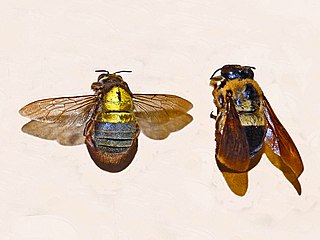
Xylocopa africana is a species of carpenter bee.

Xylocopa olivacea is a species of carpenter bee. It has a completely yellow thorax and a yellow band on the first tergite. This species is very similar to X. calens, endemic to Madagascar. X. calens just differs in the length of the hair on the metasoma.

Xylocopa inconstans is a species of carpenter bee.
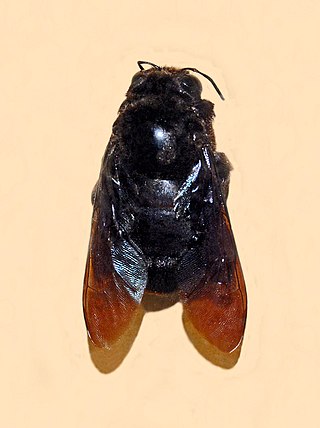
Xylocopa combusta is a species of carpenter bee.

Hoplitis is a genus of bees in the family Megachilidae. There are more than 380 described species in Hoplitis.
Chelostoma californicum is a species of bee in the family Megachilidae. It is found in Central America and North America.

Xylocopa appendiculata is a species of carpenter bee in the family Apidae. It originates from eastern Asia and was first found in the United States in 2013.

Epeolus carolinus is a species of cuckoo bee in the family Apidae. It is found in North America.

Triepeolus pectoralis is a species of cuckoo bee in the family Apidae. It is found in North America.
Calliopsis filiorum is a species of bee in the family Andrenidae. It is found in North America.
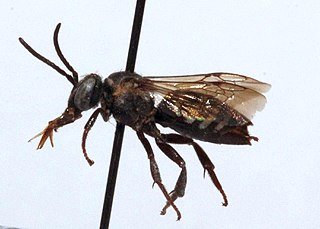
Triepeolus brittaini is a species of cuckoo bee in the family Apidae. It is found in North America.

Townsendiella pulchra is a species of cuckoo bee in the family Apidae. It is found in the United States and Mexico. It is a kleptoparasite of Hesperapis larreae.

Diadasia enavata, the sunflower chimney bee, is a species of chimney bee in the family Apidae. It is found in Central America and North America. It is a pollinator restricted to plants of the Asteraceae family. It has been observed pollinating Coreopsis tinctoria.
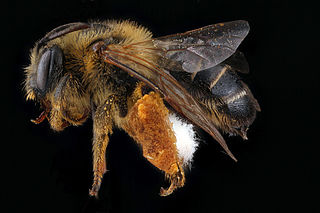
Melitta eickworti is a species of melittid bee in the family Melittidae. It is found in North America.

The two-spotted miner bee is a species of miner bee in the family Andrenidae. It is found in Central America and North America. Members of the species have communal nests made of many cells. They live in desert scrub habitat. Their primary host plants belong to the genus Helianthus.
Triepeolus grindeliae is a species of cuckoo bee in the family Apidae. It is found in North America.
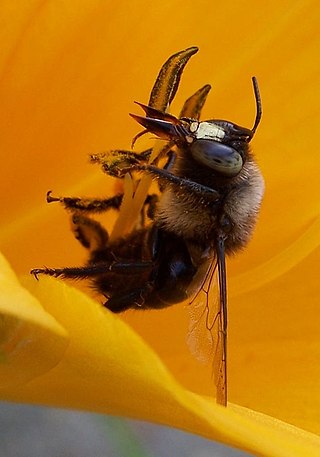
Xylocopa tabaniformis, the horsefly-like carpenter bee or mountain carpenter bee is a species of carpenter bee in the family Apidae. It is found in Central America, North America, and South America. It is 12–18 millimetres long and black. Males have yellow hair on the thorax.

















